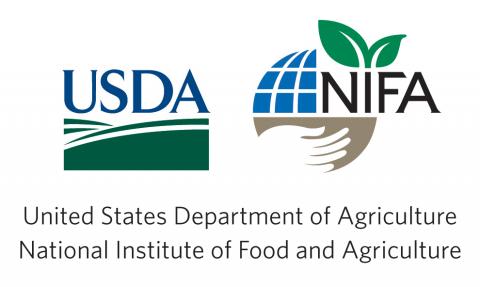
The pig is the only major agricultural animal that does not have an international SNP Consortium or SNP map This project unites the many experts together to focus on the identification of SNPs and the production of a publicly available genotyping platform. The development of a SNP chip would permit genome scans for the identification of quantitative trait loci (QTL) and the elucidation of linkage disequilibrium within relevant commercial populations.
GOALS & OBJECTIVES
This project will create the discovery platform supporting the subsequent development of a porcine high-density 50K single nucleotide polymorphism (SNP) chip. The pig represents the only major agricultural animal that does not yet have a SNP map.
The objectives of this project include:
1. Creation of pooled libraries of relevant pig germplasm and the creation of reduced representation libraries to reduce the sequence complexity of libraries targeted for sequencing
2. Utilization of Solexa sequencing to select new SNPs with high minor allele frequencies (>0.05) uniformly distributed across the genome
3. Validation and characterization of SNPs in relevant commercial populations
4. Construction of haplotypes and LD maps
5. Development of a SNP RH map to correctly order SNPs and swine genome sequence assembly
PROJECT METHODS
Our hypothesis is that deep sequencing (30x) of reduced representation library DNA sequencing can be used to rapidly identify SNPs and estimate MAF for creating a high-density (50K) SNP genotyping platform to define haplotypes and LD.
Specific Aim 1: Discovering SNPs in relevant commercial breeds. Four germplasm pools each comprising 30 unrelated individuals will be assenbled: Duroc, Landrace, Large white and Chinese/wild boars mix. Libraries will be constructed from each of these pools, and sequenced uisng the Solexa genome analyzer and searched for SNPs.
Specific Aim 2: Select SNPs that are distributed evenly across the genome with estimated MAFs that will be useful in breeding decisions within breed and for defining haplotypes. We hope this approach will decrease possible 350K SNPs identified in Aim 1 down to 12,288 that provide coverage with adequate MAFs.
Specific Aim 3: Defining jSNP minor allele frequencies and creating a HapMap. We have collected DNA from 30 unrealted sires from each breed and will include one dam that has an offspring from that sire. This approach will lower the cost and time for SNP discovery while increasing the probability that selected SNPs will be of broad utility in existing pig populations whether pure breeds or commercial synthetic lines. The SNP genotyping will be donw using the Illumina Bead Station. These results will be analyzed and used to construct a high-density (>50K) porcine SNP chip.
OUTPUT
All of the proposed objectives were met. It is generally accepted that SNPs are the most common source of variation in vertebrate genomes and that significant numbers of SNPs will be needed for future studies in all species. It is now possible to conduct studies aimed at the molecular dissection of complex traits of economic importance. For this purpose, a high density porcine SNP genotyping Beadchip is now available to the community.
This project was performed by a very active collaborative group of investigators: L. Schook, R. Malhi, and J. Beever, (University of Illinois); M. Rothschild, (Iowa State University); W. Muir, (Purdue University); J. Taylor, (University of Missouri); and M. Groenen (University of Wageningen).
IMPACT
The Illumina porcine snp chip was developed, tested and made available to the research community. Overall, the results of this study indicate the utility of using next generation sequencing technologies to identify large numbers of reliable SNPs. In addition, the validation of the Porcine SNP60 Beadchip demonstrated that the assay is an excellent tool that will likely be used in a variety of future studies in pigs. Discussions are underway for additional smaller chips to be developed for studying specific target areas.
PUBLICATIONS
Lee, K.T., Byun, M.-J., Kang, K.-S., Park, E.-W., Lee, S.-H., Cho, S., Kim, H.Y., Kim, K.-W., Lee, T., Park, J., Park, W., Shin, D., Park, H.-S., Jeon, J.-T., Choi, B.-H., Jang, G.-W., Choi, S.-H., Kim, D.-W., Kim, J.-H., Lim, D., Park, H-S., Park, M.-R., Ott, J., Schook, L.B., Kim, T.-H. and Kim, H. 2011. Neuronal genes for subcutaneous fat thickness in human and pig are identified by local genomic sequencing and combined SNP association study. PLoS One, 6(2), e16356.
Ramos, A.M., Crooijmans, R.P.M.A., Affara, N.A., Amaral, A.J., Archibald, A.L., Beever, J.E., Bendixen, C., Churcher, C., Clark, R., Dehais, P., Hansen, M.S., Hedegaard, J., Hu, Z.-L., Kerstens, H.H., Law, A.S., Megens, H.-J., Milan, D., Nonneman, D.J., Rohrer, G.A., Rothschild, M.F., Smith, T.P.L., Schnabel, R.D., Van Tassell, C.P., Taylor, J.F., Wiedmann, R.T., Schook, L.B. and Groenen, M.A.M. 2009. Design of a high density SNP genotyping assay in the pig using SNPs identified and characterized by next generation sequencing technology. PLoS ONE, 4(8), e6524.
Amaral, A.J., Ferretti, L., Megens, H.-J., Crooijmans, R.P.M.A., Nie, H., Ramos-Onsins, S.E., Perez-Enciso, M., Schook, L.B. and Groenen, M.A.M. 2011. Genome-wide footprints of pig domestication and selection revealed through massive parallel sequencing of pooled DNA. PLOS One, 6(4), e14782.
